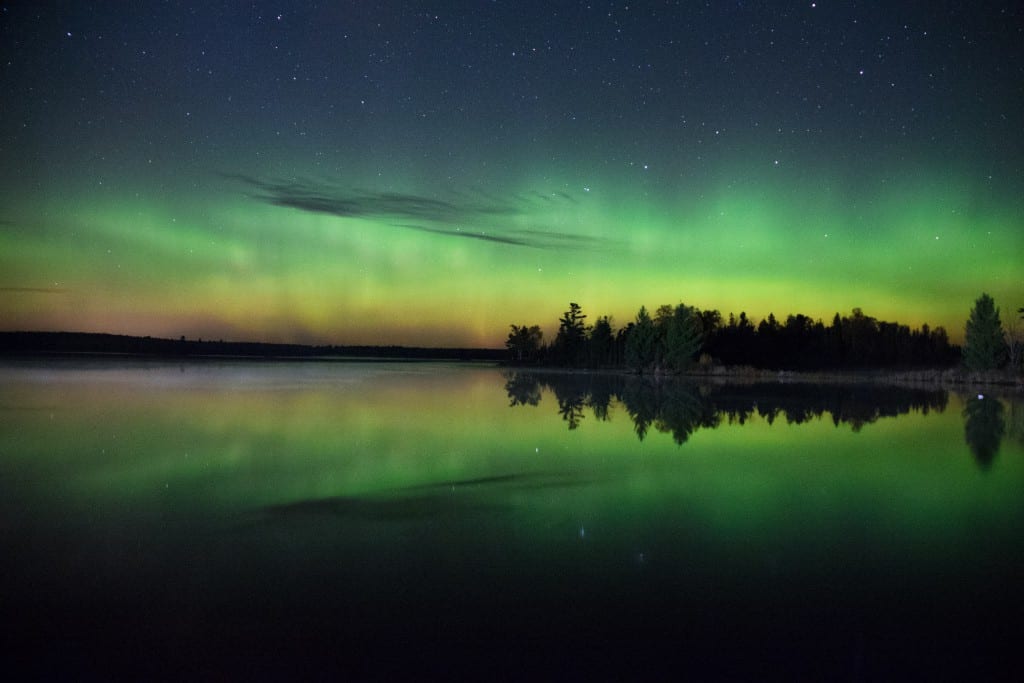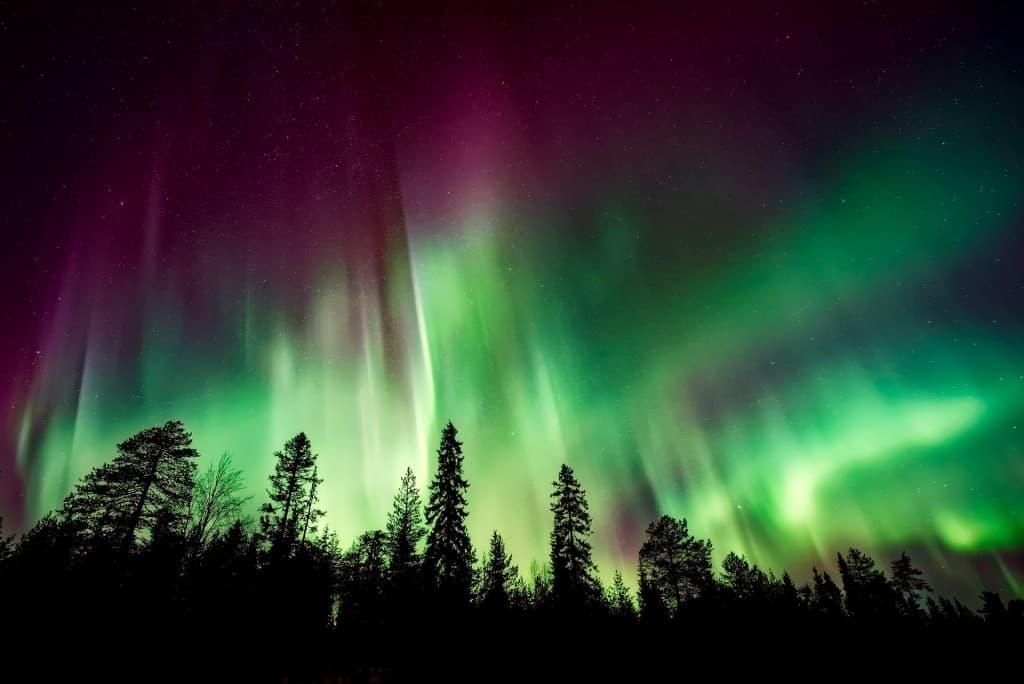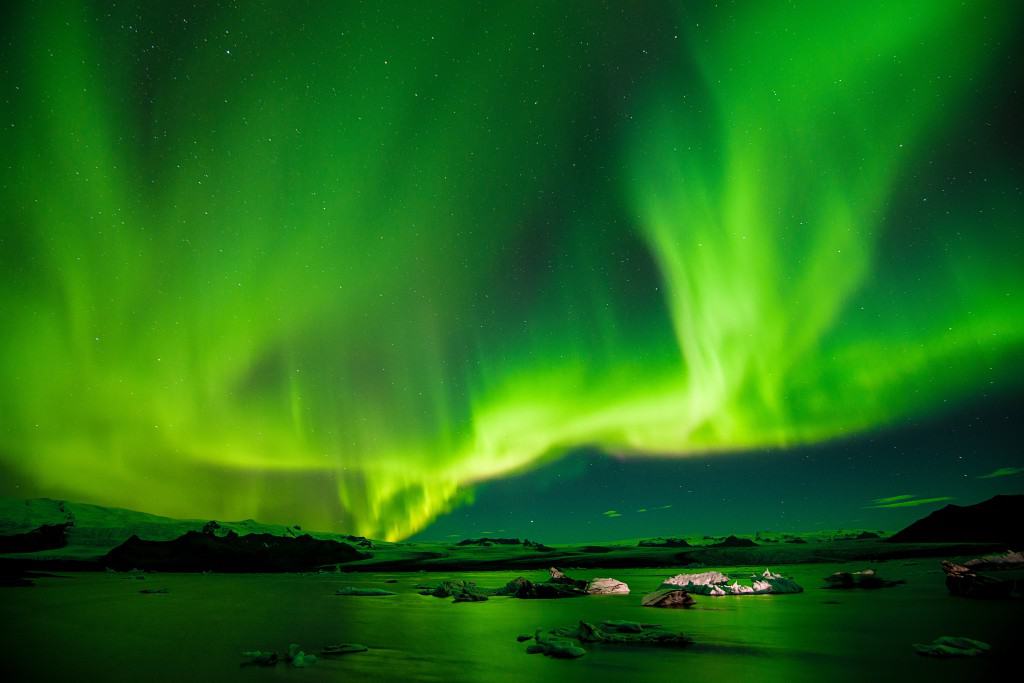The world’s biggest lava lamp is heading south.
Lucky viewers as far down as southern England and North Carolina can catch the show.
Holidaygoers shell out bigtime getting to high polar latitudes in hopes of seeing the northern lights. Thanks to a shift in the sun’s magnetic cycle, skywatchers further south can spot the aurora borealis. Fans of the aurora australis in the southern hemisphere also benefit from an expanded range.
Depending on where you live, this means a bucket-list experience may be in your back garden.

Excited atoms = exciting lights
Auroras occur when charged particles from the sun blast into the earth’s atmosphere and interact with its magnetic field. This jazzes up the electrons in the atmosphere, causing a boost to higher energy states. As the de-excited (a real scientific term) electrons return to their normal states, they emit light. Neat!
The colours depend on the type of gas involved and the energy levels of the excited atoms. Green and red indicate oxygen and nitrogen contributes to blue and purple hues.
Why now?
As part of an 11-year cycle, solar activity is increasing, with the peak expected to reach in 2025. Bigger geomagnetic storms create stronger auroras, visible in greater areas.
Where is the best place to see them?
Check the forecast for North America, Europe, and Alaska on the University of Alaska’s Aurora Forecast.
If you’re lucky enough to live near a Dark Sky Reserve, that’s your go-to. Otherwise, get out of the city. If you can still see the glow of city lights, keep going.
For lightseekers everywhere, the AuroraMAX Observatory in Yellowknife Canada has a live feed from August to May.

When is the best time to see them?
Around the time of spring and fall equinoxes, the earth and sun align for best viewing. Don’t bother if it’s a cloudy evening. Also important: a new moon.
It seems unthinkable that people won’t post pics online. Keep an eye on social media for sightings near you.
How do I plan for it?
The auroras are weather. As many disappointed travellers can tell you, forecasts are merely predictions. But the wonderful thing about the expanded range of the auroras is that you don’t have to plan (or pay for) an expensive Nordic holiday. No lights one night? Try again the next time the chances look good.









